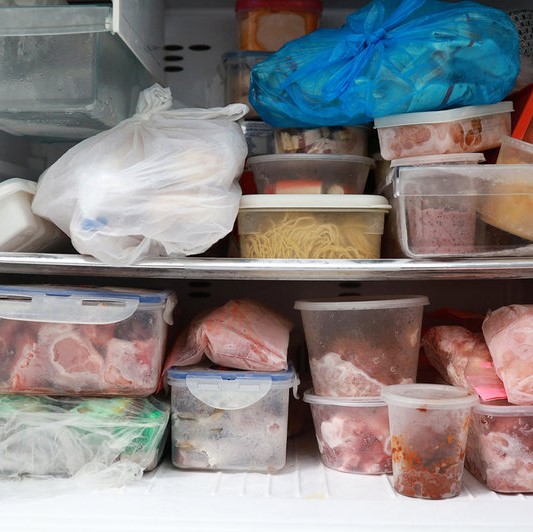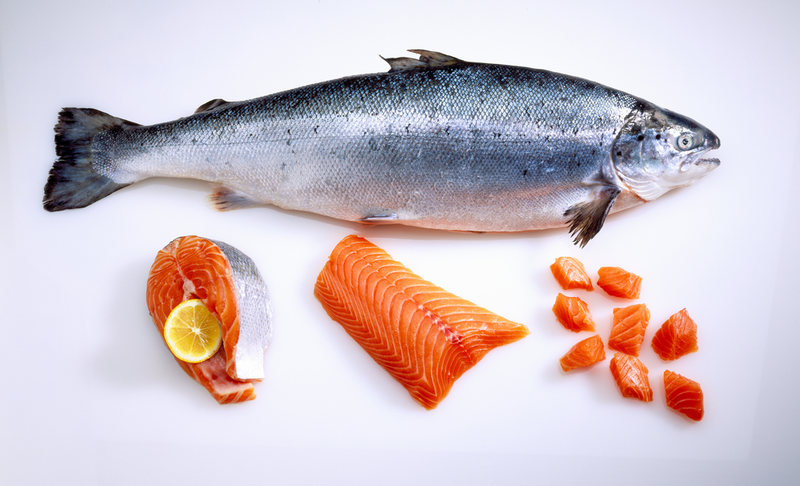Oct 08, 2020

You can’t deny that buffet restaurants create the most food waste compared to other types of restaurants. The reason for this is the restaurant concept that promotes an all-you-can-eat format and one of buffet restaurants’ major selling points is the presentation of a wide range of menu items and ingredients. The more menu items you have and the more expensive the ingredients, the more customers you can attract.
In addition, an ordinary restaurant’s cost of goods sold is usually about 30 - 35% of the sales, while the same cost is 40 – 50% for buffet restaurants, because the amount of food eaten by customers at a buffet restaurant is higher on average than ordinary restaurants and customers would immediately feel like it’s not worthwhile if they just eat the normal amount of food.

Food waste usually has a variety of causes, from the ingredient reception process to the trimming, cooking and dish decoration processes. However, buffet restaurants have a bigger chance of creating food waste than other restaurants, because the food is over-prepared to meet customer demands and then has to be discarded. In the case of buffets with a self-service format such as hotel restaurants or shabu/grilled pork restaurants where customers dish up their own food, food is left unconsumed by customers when they dish up more than they can eat.
In the past, you probably didn’t pay much attention to it. It didn’t bother you much that food was left by the customers or untouched by them because you sold well. After the recent Covid crisis, however, your sales went down, while costs remain the same. If you’re still managing your ingredients the way you used to, there’s a chance that your costs will exceed your income and make you lose money.
This is why food waste reduction should be a priority for buffet restaurant owners right now since we have no way of knowing how long it will take the economy to recover. In addition, the following are four simple steps you can use in your buffet restaurant to reduce food waste and increase profit:
- Categorizing and Keeping a Record of Food Waste
The first step in reducing food waste starts with keeping a record of all food waste in the restaurant. Food waste mainly occurs during the following two stages: Before the food reaches the customers and after the customers have finished eating.

As for waste occurring before reaching the customers, it could be caused by an inefficient trimming process, improper ingredient storage and over-preparation of food to meet customer demands. You should categorize the waste for each ingredient type or group and weigh everything to find out which ingredient type was wasted and at which stage this happened. If you don’t know which stage causes waste, you can’t make a plan to reduce the waste.
Other than keeping a record of the amount of ingredients wasted before reaching customer hands, don’t forget to record the amount of food left unconsumed by the customers because that’ll let you know how much of the total waste is caused by the customers not finishing their food.
The benefit of keeping a record of the waste from each ingredient and process is that it’s an indicator of how effective your waste reduction efforts are.
- Promote Teamwork

In order to efficiently reduce or prevent food waste, you really need your employees’ cooperation, both in your back yard and front yard.It’s not just a short-term plan because waste reduction cannot be accomplished in a short time. And if you don’t constantly control and monitor it, the waste can come back any time.
If your employees see waste as a normal occurrence in your restaurant and not part of their responsibility, your restaurant will never be able to reduce food waste.
Therefore, raising awareness about food waste until it becomes a culture in your restaurant is essential, because your employees are the ones handling the ingredients all the time. If you train them on the importance of waste reduction and they understand your direction, goals and the benefits they’ll get, that’s the most efficient way to reduce food waste.

Most importantly, you have to make it clear with your team that the purpose of keeping a record of waste isn’t to criticize them or tell them that they lack efficiency. It’s just a way to inspect the current situation to find the cause and goals for reducing waste in the future.Otherwise, you might encounter resistance and uncooperative employees.
And whenever this becomes your restaurant’s culture, any new employees won’t feel like it’s above their duties, but instead a part of their daily routine.
- Changing the Service Format
Although your restaurant offers an all-you-can-eat buffet service, you can change some aspects of your service to reduce food waste without affecting your service or customer experience. For example, if your restaurant has a self-service format where food is pre-cooked and customers dish it up themselves, there’s a higher possibility of food waste than full-service restaurants where food is cooked to order because it means you have to prepare all the food and wait for the customers to dish it up instead of waiting for the customers to order, after which the restaurant will cook one dish at a time.

Switch some of the self-service aspects of your restaurant where food is pre-cooked and waiting for customers to dish it up to a cook-to-order service and serve the food straight to the table. Although the labor cost may be higher for this method, you can choose to offer this option for only dishes with a high ingredient cost or easily spoiled ingredients, such as seafood, etc. Moreover, the benefit of preparing food one plate at a time is that the customers get freshly cooked food as if they’re eating an à la carte dish.

Using smaller plates also plays a part in reducing food waste, because customers tend to dish up more than necessary, which means they might not finish the food. Using smaller plates can make the customers dish up their favorite foods first and they can always walk back for more if they want.
- Changing Your Menu Format
One of the most efficient methods of reducing waste is to change your menu format. After your restaurant has a record of food waste categorized by ingredient type and stage, you’ll know which process or menu item causes waste. Sometimes even after you’ve improved your food preparation or cooking processes, there’s still a lot of waste.

That might be because the format of your menu makes it difficult for quality control, resulting in a risk of decrease in quality. For example, fried dishes that, if you leave it for a time, the food might lose freshness or serving fresh seafood ingredients such as river shrimp or salmon, the quality for which immediately changes if kept for more than 2 – 3 days. No matter how much attention a restaurant pays to every step, there’s always a possibility of the food becoming waste.
Changing your menu format altogether, for example, changing the fried dishes to stir-fried dishes or changing from serving fresh ingredients to serving cooked ingredients, might be a better alternative. However, you have to make sure customers don’t feel like there are fewer options or like the options aren’t as good because this will immediately affect the customers’ feelings.

Furthermore, inventing new menus using the ingredients left over from the trimming process is another way to reduce waste without increasing ingredient cost. For example, you can boil salmon heads with some soy sauce or add salmon skin to salad to make crispy salmon skin salad, etc.
And these are the four steps buffet restaurants can use to reduce food waste and increase profit.
Click to read Zero Food Waste Program: Reduce Cost, Increase Profits; Food Waste Reduction Secrets Revealed
- Benefits of Managing Restaurant Food Waste
- What Is Food Waste? Reduce Cost, Increase Profit: You Can Do It If You Understand Zero Food Waste!
You can tune in Zero Food Waste Program to Reduce Costs and Increase Profits through Food Waste Reduction via Facebook : Makro Horeca Academy and the website to increase restaurant owners’ know-how so that they can develop their business to survive the current crisis and to educate them on how to reduce food waste for reducing costs and increasing profits, with the online content on food waste and food waste management methods.
